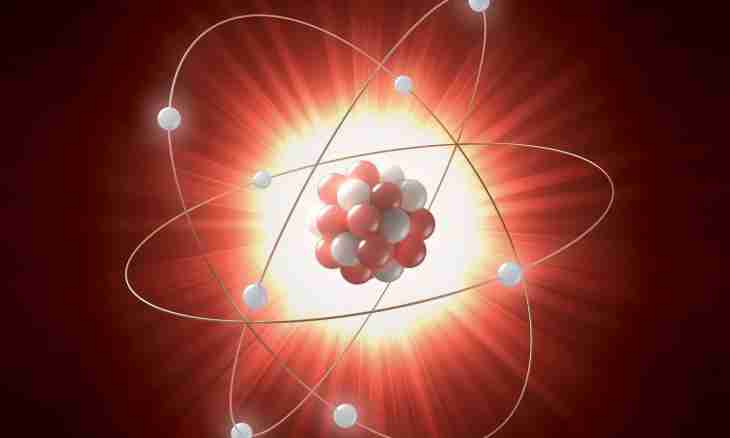Atom is a smallest particle which cannot be divided into components in the chemical way. Atom consists of a positively charged kernel at the expense of protons (p) with a charge + and neutral particles of neutrons (n). Around it the electrons (ē) having a negative charge rotate.
It is required to you
- Periodic Table of D.I. Mendeleyev.
Instruction
1. Thanks to ability it is correct to calculate quantity of protons, neutrons or electrons, it is possible to determine the valency of chemical element and also to make an electronic formula. For this purpose only the Periodic Table of D.I. Mendeleyev which is an obligatory reference material will be required.
2. D.I. Mendeleyev's table is divided into groups (are located vertically), which only eight and also for the periods located horizontally. Each chemical element has the serial number and relative atomic mass that is specified in each cage of the periodic table. The quantity of protons (p) and electrons (ē) coincides with serial number of an element in number. For definition of number of neutrons (n) it is necessary to subtract number of chemical element from the relative atomic mass (Ar).
3. Example No. 1. Calculate quantity of protons, electrons and neutrons of atom of chemical element No. 7. Chemical element No. 7 is a nitrogen (N). At first define quantity of protons (p). If serial number 7, so is 7 protons. Considering that this number coincides with quantity of negatively charged particles, electrons (ē) there will be 7 too. For definition of number of neutrons (n) (Ar (N) = 14) subtract serial number of nitrogen (No. 7) from relative atomic mass. Therefore, 14 – 7 = 7. In a general view all information looks thus: р = +7; ē =-7; n = 14-7 = 7.
4. Example No. 2. Calculate quantity of protons, electrons and neutrons of atom of chemical element No. 20. Chemical element No. 20 is a calcium (Sa). At first define quantity of protons (p). If serial number 20, therefore, is 20 protons. Knowing that this number coincides with quantity of negatively charged particles, means electrons (ē) too there will be 20. For definition of number of neutrons (n) (Ar (Sa) = 40) subtract serial number of calcium (No. 20) from relative atomic mass. Therefore, 40 – 20 = 20. In a general view all information looks thus: р = +20; ē =-20; n = 40-20 = 20.
5. Example No. 3. Calculate quantity of protons, electrons and neutrons of atom of chemical element No. 33. Chemical element No. 33 is an arsenic (As). At first define quantity of protons (p). If serial number 33, so is 33 protons. Considering that this number coincides with quantity of negatively charged particles, electrons (ē) there will be 33 too. For definition of number of neutrons (n) (Ar (As) = 75) subtract serial number of nitrogen (No. 33) from relative atomic mass. Therefore, 75 – 33 = 42. In a general view all information looks thus: р = +33; ē =-33; n = 75 - 33 = 42.

